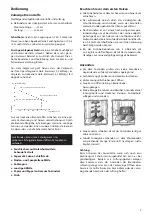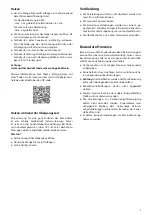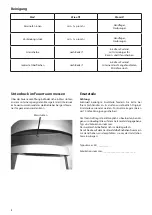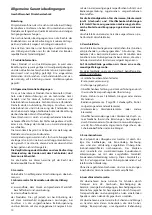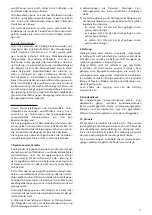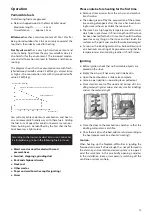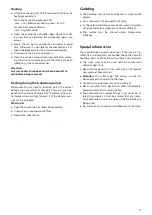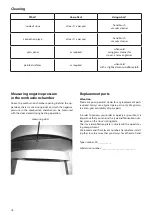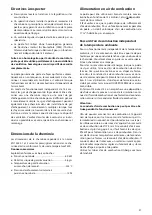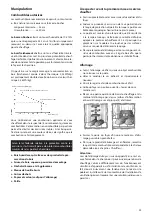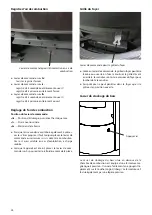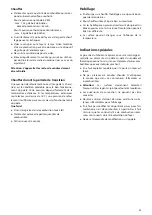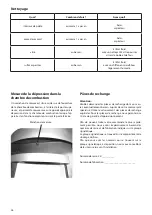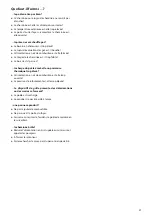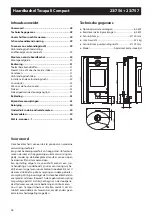
13
Regulations to be observed
●
Local and building law regulations
●
The stove must be installed by a professional and con-
nected to the chimney. The specific national regulations
for safe installation of the connector must be complied
with. The connecting piece used must possess an open-
ing for cleaning.
●
The stove must be regularly checked by a professional.
●
The stove has national technical approval from the
Deutsches Institut für Bautechnik (DIBt) (German
Institute for Civil Engineering) for room-air independ-
ent operation.
Due to its general technical approval, the stove can be
used simultaneously with an approved ventilation sys-
tem without additional safety device.
Equipped with a self-closing combustion chamber door,
the stove is approved to be connected to multi-flue chim-
neys provided that it operates with a room-air dependent
combustion-air supply.
Room-air independent operation requires that the exhaust
gases of the fireplace be discharged through a single-flue
chimney or the exhaust duct of a single-flue air-exhaust
chimney. Exhaust gases may also be discharged into multi-
flue exhaust gas systems if all connected fireplaces are part
of the same utilisation unit/action range of the ventilation
system. Individual differences can be discussed with your
district master chimney sweep.
Chimney design
The chimney design is according to DIN EN 13384 -1 and
-2 or to the specific national regulations.
The chimney must comply with the temperature class
T400.
Necessary data
Closed operation with billet wood:
●
Nominal thermal output ................................................6,0 kW
●
Waste air mass flow rate .................................................4,6 g/s
●
Waste air temperature at
connection duct ................................................................ 323 °C
●
Minimum delivery pressure at
nominal thermal output ................................................... 12 Pa
Combustion air supply
The stove can be operated conventionally, dependent on
the ambient air as well as independent of the ambient air.
It must be guaranteed that there is enough combus-
tion air available for the stove. For the proper function of
the stove, a necessary combustion air volume current of
17 m³/h must be considered.
Ambient air independent
combustion air connection
By an ambient air independent operating mode, the com-
bustion air must be added from outside through a leak-
proof line or through a supply duct in the chimney. Thus,
speak with your district chimney sweep master.
Due to energy saving reasons, the combustion air inlet
should be able to be blocked if the stove is not being op-
erated. This can occur through a shut-off valve in the com-
bustion air line or through the air slide valves on the stove.
If a shut-off valve is used, this must be clearly identified
with CLOSED/OPEN.
Through the shutoff, it is avoided that heat is removed
from the set-up room through the constant circulation of
cold combustion air and cold combustion air lines may
lead to an increased formation of condensation.
Attention:
The combustion air line may not be closed during
operation!
In order to feed the combustion air to the stove externally
via a pipe instead of from the room in which it is installed,
it is possible to screw a Ø 125 mm combustion air pipe to
the back of the stove or at the bottom. If the combustion
air pipe installed is longer than 3 m, calculations will have
to be carried out to verify an adequate supply of combus-
tion air. At extremely low outdoor temperatures, conden-
sation can occur on the combustion air duct. For this rea-
son it must be insulated with a suitable insulating materi-
al. Observe the rules of the oven and air heating construc-
tion craft.
Use the Olsberg combustion air pipes with sealing lip.





